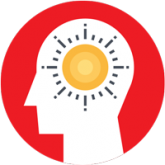Article

How to avoid ‘checklist’ psychiatry
- Author:
- Kaustubh G. Joshi, MD
- Rebecca A. Payne, MD
Our patients are best served when we take the necessary time to use all resources to conceptualize them as more than a checklist of symptoms.
Article

Helping patients through a benzodiazepine taper
- Author:
- Rebecca A. Payne, MD
- Kaustubh G. Joshi, MD
Consider these strategies and nonpharmacologic interventions when creating a tapering plan for a patient's prescribed benzodiazepine.
Article
Misuse of Prescription Stimulant Medication Among College Students: Summary of the Research Literature and Clinical Recommendations
- Author:
- Kate Flory, PhD
- Rebecca A. Payne, MD
- Kari Benson
News
Alcohol dependence in women: Comorbidities can complicate treatment
- Author:
- Rebecca A. Payne, MD
- Sudie E. Back, PhD
- Tara Wright, MD
- Karen Hartwell, MD
- Kathleen T. Brady, MD, PhD
Screen for trauma history, mood and anxiety disorders, and treat them concurrently
